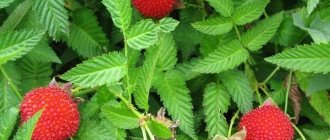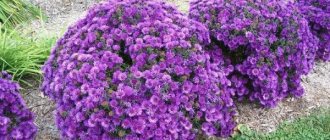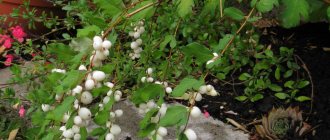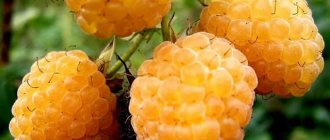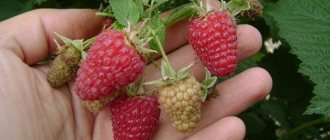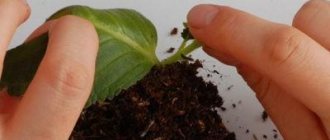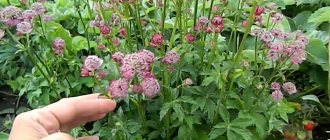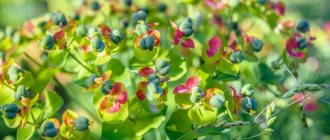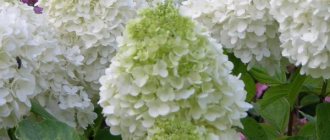- How to propagate a culture
Experienced gardeners never cease to be amazed by this amazing plant - longline onions.
The exotic appearance of the crop raises concerns about whether the plant will take root in a summer cottage. However, multi-tiered onions are distinguished by their ease of care, frost resistance, and resistance to diseases and pests. The decorative nature of the plant attracts the attention of many people, including vegetable growers.
A little history
The first information about a form of onion similar in its morphological characteristics to this plant is in an ancient Chinese herbal book of the fourteenth century. It was called "lau-qi-tsun". The Chinese called it a grass that does not form seeds and grows in layers.
Biologists believe that multi-tiered onions, the cultivation of which began in East Asia, came to England in the nineteenth century. And it was from there that his victorious march through the countries of Europe began. True, then this plant was called tree or Egyptian onion. Due to the very strong aroma and pungent taste of its airy “bulbs”, it was already used in the preparation of marinades of finely chopped vegetables as a seasoning. In Russia, this garden crop appeared much later - at the end of the last century.
What it is?
general information
It is a perennial vegetable herb of the onion family. The species originated from crossing onions with onions. From a large mother bulb grow tender, dark green tubular leaves 40 cm long, 2 cm in diameter and meter-long shoots with dense, crisp bulbs. There are from 3 to 8 of them in the inflorescence, weighing plus or minus 1.5 g, covered with a thick husk from yellow-green to purple.
Characteristic
Multi-tiered onions are the “primrose” of green vegetables; they begin to grow under the snow. It tolerates both drought and frosts of -50°C. It grows in one place for 5–7 years.
Brief history of the origin of the name
From the bulbs on the arrows right in the air, green shoots grow again on the second floor with the next generation of smaller bulbs. Of these, the following. And so on 2-4 times per season. Hence the name - multi-tiered. Its other names:
- viviparous - instead of seeds, onions are immediately “born”, immediately ready to germinate;
- walking - the arrows fall from the weight of the fruit and a kind of step is obtained;
- horned - bulbs with feathers stick out in different directions like horns;
- Canadian - American version of the name, confirms that the plant is comfortable in the cold;
- Egyptian;
- catawissa.
Description of appearance with photo
Outwardly it looks like a spring onion, until you find an “inflorescence” of fruits on it, not flowers. The leaves have a strong onion smell, do not become coarse until mid-July - early August, and taste sharper than onions or spring onions.
Next you can see a photo of a multi-tiered onion.
Brief history of origin and place of growth
Onion cultivation began in East Asia. It was mentioned in Chinese herbalists as early as the 14th century. In the 19th century, the British brought it to their country, and from there the vegetable quickly spread to all corners of Europe under the names “tree” or “Egyptian”. Onions have been cultivated in Russia since the end of the 20th century, but not all gardeners know about them.
Differences from other species
Unlike his “colleagues” he:
- never blooms, reproduces only vegetatively;
- does not have a dormant period, can be grown all year round;
- poorly stored outside the ground;
- its leaves remain tender for a long time;
- powerful root system, about one and a half meters by the third year of life;
- the underground bulb is edible, but loose and tasteless;
- The most nutritious onion known.
Chemical composition
Viviparous onion is more nutritious than its relative, the spring onion:
| multi-tiered | onion | |
| Proteins g | 1,4 | 1.9 |
| Fat g | 0,8 | 0,4 |
| Carbohydrates g | 8,6 | 4,1 |
| Dietary fiber g | 2,6 | 2,4 |
| Ash g | 0,1 | 0,3 |
| Water g | 86,5 | 90,5 |
| Calories kcal per 100g | 60 | 35 |
But it is especially valued for its richness of vitamins and minerals. Only vitamin C in it in the spring is 80 mg, the entire line of group B, also vitamins E and K.
Macronutrients:
- potassium;
- calcium;
- magnesium;
- sodium;
- phosphorus.
Microelements:
- iron;
- manganese;
- copper;
- selenium;
- zinc.
Important!
Omega-6 and omega-3 fatty acids and a whole range of saturated and monounsaturated acids. You can’t say anything - early spring greens.
Beneficial features
According to experts, the leaves of this onion have excellent phytoncidal properties and can be used as an anti-inflammatory agent.
Its green part is very rich in nutrients. Compared to the onion variety, multi-tiered onions contain much more vitamin C and carotene. Another valuable quality of this original plant is that it does not accumulate nitrates, and is significantly superior in nutritional value even to trumpet. In addition, this species enhances the secretory activity of the intestines and stomach better than others, and is characterized as a pronounced bactericidal and anthelmintic folk remedy.
Diseases and pests - prevention and treatment
Fungal diseases pose the greatest danger to any vegetable plants, all varieties of onions are no exception.
To prevent powdery mildew (downy and real), once in the spring the bed must be treated with a 1% solution of Bordeaux mixture. It is advisable to carry out the treatment at the earliest stage of feather growth, so that the regrown, untreated greenery can be cut.
Of the insects, the danger is the onion fly, which lays eggs near the bulbs or on the leaves. Small fly larvae colonize the green feather from the inside and make it unfit for consumption.
The main method of prevention is to repel flies during the summer with various compounds with a pungent odor (walnut leaves, pine needles, wormwood).
An excellent method of prevention is to plant onions and carrots side by side in neighboring beds. Carrots with their specific smell repel the onion fly and vice versa: onions - carrots.
Much less dangerous is the onion weevil, which spends the winter in the dry crown. In the spring, the beetle and its larvae gnaw on the foliage - the onion turns yellow and dries out. The best prevention is to clear the garden beds of dry leaves and debris.
In the video, the gardener author shows how multi-tiered onions grow in her beds.
Description
Belonging to the onion family, this garden plant has a very interesting appearance.
Its leaves are wide, tubular, covered with a waxy coating, as a result of which they acquire a bluish tint. They grow up to forty centimeters in length. The tubular arrow ends in an inflorescence, on which aerial bulbs are then formed. The height of the first “link” of the arrow can reach up to a meter. From the first inflorescence a new one grows, which also ends in airy “fruits”. Thus, on average up to four levels can form on one plant. Aerial bulbs, weighing about one and a half grams, hang in a bouquet on the inflorescences, forming from three to thirty such heads on each. The fruits are covered with a tough skin.
Multi-tiered onions, the varieties of which are few, have not yet received wide recognition in our country, although in terms of their properties, if not superior, then not inferior to other varieties. Meanwhile, this plant is one of the best among those that produce greenery in early spring. It has a very elastic, crispy feather, whereas the batun, for example, is soft and not so juicy.
The nuances of caring for crops during the season
To get a good harvest of greens, the gardener is required to:
- Regular loosening of the bed. This ensures normal air exchange. It must be carried out 1-2 days after each watering.
- Weeding. The root system of onions is underdeveloped; weeds simply “choke” it, robbing it of the necessary nutrition.
- Watering. It is necessary when the soil dries out at a depth of 3–4 cm. On average, until the greens first ripen, you need to carry out 4-6 waterings (twice a week). Excess moisture is harmful to the crop - the bulbs begin to rot. Water the bed along the furrows.
- Fertilizer application. It is advisable to use natural fertilizers. 3-4 times during the growing season are enough. Most often they are combined with watering. You can use infusions of fresh cow manure, bird droppings, nettle and dandelion leaves, and wood ash. All this provides the plants with nitrogen, stimulating them to actively grow green mass. It is useful to fertilize after the first cutting of the feather to give the plants strength.
- Disease and pest control. Here, too, it is advisable to avoid chemicals. The best prevention is competent agricultural technology. To protect against fungal diseases, it is useful to spray the plants once every 7–10 days and water the soil with solutions of soda ash, wood ash, dust with chalk or colloidal sulfur. Pests are effectively repelled by mustard powder, tobacco crumbs, and ground pepper scattered over the garden bed.
- Frost protection. When planting before winter in the fall, the bed is covered with a layer of humus at least 5 cm thick. It is removed in the spring. When return frosts are expected, it is covered with plastic film or any covering material. If seeds were planted, by autumn there are already quite long feathers. In this case, the onions are covered with straw or a mixture of peat chips and sawdust.
Bulbs
The multi-tiered variety differs from onion and other perennial varieties of its species in its exotic flower shoot. From two to five “floors” are formed on it, on each of which from three to eight elongated-rounded bulbs grow together in nests. They are dressed in purple, yellow or brown “shirts”.
The inner scales are whitish, with a faint greenish tint. The size of these amazing aerial bulbs gradually decreases from the first to the last tier. The largest of them are located below.
The arrows break under the weight of the harvest, so they need to be tied up. If this is not done, the peduncle may end up on the ground, and the bulbs will sprout in the soil where they fall. This is why a multi-tiered bow is sometimes called a “walking” bow.
Often small white single flowers are formed on long stalks among the heads, but they are sterile.
This plant does not produce seeds; it reproduces only vegetatively or by dividing the bush. By July, its aerial bulbs sprout directly on the bush, since they do not have a dormant period. The underground ones ripen only by September.
Harvest and storage
The leaves are harvested early: the first feathers can be cut off already in April, when their length reaches 25 cm. They need to be cut at a level of 5-8 cm above the neck of the underground bulb.
The bulbs that have formed in tiers are harvested from late July to mid-August. By this time they acquire a purple tint interspersed with brown. To remove them, you need to carefully cut off the arrow with the bulbs 5 cm from the ground with a sharp knife.
Part of the harvest can be used for culinary purposes, another part can be used for storage and subsequent replanting in boxes in winter. Onions can also be planted in the soil in the spring to produce young, juicy greens.
Gardeners advise putting such onions for storage in pits or cellars. It is also stored in attics, in unheated rooms, in a layer of sand, at a temperature not lower than -2 degrees. The harvested crop can also be placed in the refrigerator or freezer, after drying and packing in paper bags. Bulbs that are not separated retain their external and taste qualities much longer.
In warm rooms, the collected bulbs begin to germinate and eventually die.
You can learn about the features of growing multi-tiered onions and their beneficial properties from the following video:
Multi-tiered onions have an unusual appearance and produce a lot of green above-ground mass - these are the distinctive features of the variety. To get a good harvest, you need to provide the crop with the necessary conditions for planting and growing.
0
0
Copy link
Agricultural technology
Multi-tiered onions, planting and caring for which are carried out in almost the same way as, for example, the onion variety, under certain conditions can be grown in one place for up to five years. With proper agricultural practices, each such three-year-old plant can produce up to four kilograms of yield per square meter.
Many gardeners plant multi-layered onions on their greens in early spring. At the end of autumn, its above-ground part almost completely dies off, and in this form it goes to winter. The plant is very frost-resistant: according to experts involved in the breeding of vegetable crops, it is not afraid of even forty-degree cold weather - in the presence of little snow cover and when the soil is severely frozen. True, the plant must already have a fairly developed root system.
However, sudden changes in temperature can be dangerous for this onion, especially in March and April, when, after an early and prolonged thaw, severe frosts suddenly occur again. At the same time, even bulblets hidden under a layer of snow that have fallen from a bush retain their germination even on the very surface of the soil.
Condition requirements
Multi-tiered onions do not cause any difficulties when growing; they are frost-resistant and drought-resistant and can grow anywhere. But in order to get the first green arrows as early as possible, you need to select rich, breathable loamy soils for this crop. Wet, acidic and heavy soils are unsuitable for viviparous onions.
See also
Growing, caring for and feeding onions for turnips in open groundRead
When the substrate becomes waterlogged, underground bulbs quickly rot. A well-warmed and sunny area, from which the snow cover melts early in the spring and does not retain water, is most suitable.
An important condition for growing and obtaining an early harvest will be the timely application of organic fertilizers. It is recommended to plant this onion crop after beets, zucchini, potatoes, radishes, cabbage, cucumbers, and legumes.
Landing
Experienced gardeners, who have already harvested more than once, determine for themselves when to plant multi-tiered onions. When planted in summer, it has time to take root. Having sprouted and formed several leaves, the plant will go to winter and begin to grow back in early spring. If the heads are planted in the ground immediately after they ripen, then you need to take into account one feature of this crop: it will be possible to collect feathers only next year in mid-March. Otherwise, by harvesting the crop in the fall, you can destroy the onion, which in its fragile state will not be able to survive the winter.
Basal bulbs should be planted in a square nesting pattern with a distance of twenty centimeters between them. Multi-tiered onions can be planted more densely if the seedling is small. In this case, the depth of planting in the soil also changes: for large ones - about ten, for others - up to six centimeters.
In this case, each faction must be planted separately, since they differ not only in the type of sowing, but also in the timing of harvesting the feathers.
Some gardeners, already well familiar with the characteristics of this crop, use a more rational option. Having divided the bed into two parts, they plant the heads often on one, and less frequently on the other.
In early spring, from the first part, they harvest the greenery along with the bulbs, pulling out the plantings and thereby thinning out the area, and leave the second part until the summer, so that in June they will already have lush greenery, which will simply need to be cut off. The bulblets obtained from the tiers are immediately placed in the ground. Trimmed stumps will again produce a bountiful harvest, and the planted material will be able to take root and safely overwinter. Apparently, thanks to these features, many people prefer to have multi-tiered onions in their garden.
MULTI-TIERED ONIONS: WE RECOMMEND PLANTING AND GROWING IN YOUR GARDEN
We told you when to plant and how to grow multi-tiered onions. Believe me, this is a wonderful and very useful culture in all respects.
Many amateur gardeners complain that they did not know about it before, because multi-tiered onions provide the whole family with tender fresh herbs from mid-April to early November. And pickled bulbs are also an extremely tasty side dish for any dish!
Unfortunately, so far there are only a few cultivated varieties of multi-tiered onions. We offer you the two best of them. These are Likova and Chelyabinsk super early .
You can buy them from us now!
Growing
This plant is cultivated as both a perennial and an annual crop. It grows best on areas of southern or southwestern slopes that are early cleared of snow cover, on light fertile soils. In general, its cultivation differs little from the agricultural technology of batun, but it also has its own characteristics.
In non-chernozem zones, as a perennial crop, especially in northern and damp lands, the multi-tiered variety grows better on ridges, and as an annual planted in dry areas in the middle and southern regions - on a flat surface. At the same time, preparing the site with its planting scheme is no different from growing trumpet.
Peculiarities
In spring, multi-tiered onions are one of the first to germinate among perennials. Its leaves grow very quickly even with some shade in the area. Experienced gardeners say that growing this plant is not at all difficult. It will feel good on any soil and in any conditions.
Of course, on loose soil, free of weeds, with frequent watering and proper feeding, it will delight you with its harvest, but even in a forgotten far corner of the site it will bear fruit.
By the fifth or sixth year, many new root bulbs are formed, so the planting thickens. In turn, the underground part of the bulbs becomes noticeably smaller. Therefore, the plant is replanted or simply thinned out.
Common varieties
Popular crop varieties:
- Chelyabinsk . High-yielding, low-maintenance variety. During the season from 1st quarter. m you can collect up to 3.5 kg of fresh herbs and up to 1 kg of onion fruits (aerial bulbs). They are dense, crispy, and have a distinct pungent taste. The variety ripens in 20 days.
- Odessa winter 12 . Up to 30 aerial bulbs are formed on the peduncle. Green leaves reach 40 cm in length. From 1 sq. m harvest up to 2.4 kg of greens. The taste is spicy.
- Memory . Early variety. Onions grow quickly. For the season from 1st quarter. m manages to collect up to 3 kg of green leaves. One bulb produces an average of 4 green leaves.
- Likova . The advantage of this variety is the development of greenery even in insufficient illumination of the area. 2-8 aerial bulbs are formed in one inflorescence. Productivity – up to 3.6 kg per 1 sq. m.
- Gribovsky 38 . The variety of multi-tiered onions is resistant to cold, which allows it to be grown in the lands of the Urals and Siberia. This crop is early ripening: the first harvest is harvested 3 weeks after the snow melts. Onion bushes are compact and dense.
Not too many varieties of multi-tiered onions are cultivated in Russia. Here this plant became widespread only at the end of the 20th century.
How multi-tiered onions propagate
As is known, this plant does not produce seeds. It reproduces by root or aerial bulbs. The latter take root much faster. It is better to take large material from the first two tiers for planting. In the first year, in the fall, they form two or three daughter bulbs.
The heads for sowing must be mature and have roots or root tubercles at the bottom.
Multi-tiered onions are best propagated using material collected from three- or four-year-old plants. Heads intended for forcing, as well as for winter or spring planting, must be dried and stored at a temperature of about zero degrees.
Reproduction
It is typical for this onion variety to reproduce only with the help of bulbs. To do this, use bulbs growing underground or bulbs located on tiers. As was previously described, the flowers do not have time to ripen and simply dry out, so this variety does not have seeds.
The degree of maturation of the aerial bulbs can be easily determined by the brownish tubercles that are located at the bottom of the root system. If the weather is quite humid, you can even observe sprouted roots.
By the time the first signs of root sprouting appear on the aerial bulbs, the spring leaves have dried out, and in their place autumn leaves begin to grow.
For propagation, bulbs located on tiers are used
Aerial bulbs are not suitable for long-term preservation; they tend to dry out.
The bulbs can be stored in a cool place for about 2-3 months. Then they need to be planted in the year in which the harvest took place, i.e. It is preferable to plant onions before winter. The landing deadline is the end of September. The bulbs tolerate frost perfectly and with the arrival of spring they begin to come to life and sprout roots. The only thing that can affect the life of the bulb is sudden changes in temperature. That is, sudden freezing, followed by sharp thawing and freezing again.
Compared to other onion varieties that are bred for growing succulent greens, this variety produces 2-3 children in the first year. Subsequently, every year their number increases and reaches 10-15 daughter bulbs.
You should not allow a large number of baby bulbs to grow; 3-4 years is sufficient. The onion family becomes compacted and prevents the formation of large leaves. Due to this, the yield is significantly reduced.
Aerial bulbs must be stored in a cool place.
Due to the fact that the rhizome system is very developed, it is renewed every year, which cannot be said about other varieties.
In multi-tiered onions, the roots dry out along with the green feathers. This happens so that young, highly branched roots will sprout in the autumn. Thanks to its branching, the plant will feed in the fall and will withstand winter frosts well.
The variety of multi-tiered onions does not require intensive care and additional knowledge. The high frost resistance of this variety is amazing. The bulbs tolerate frosts remarkably well down to minus 20 degrees. As soon as the soil begins to freeze, young and juicy feathers appear.
Yellowing of green feathers indicates drying of multi-tiered onions
Care
After the snow melts from the onion bed, you need to remove all dead plant debris. After this, they begin feeding. Typically, by the third or fourth year after planting, beds of multi-tiered onions become too dense. Therefore, in the fall or early spring they are thinned out, leaving one, or maximum two, root heads in each nest. Some people use excess bulbs for food, but they are also excellent as planting material.
A two- or three-year-old bush has the highest yield. In prolonged cool and rainy weather, airy bulbs ripen worse. The leaves grow well and retain their green appearance right up to frost.
In dry, hot weather, aerial bulbs should be collected at the end of July, maximum at the beginning of August, since by this period the arrows, having turned yellow, begin to dry out.
In early spring, it is better to grow multi-tiered onions under film. In this case, greens can be obtained fifteen days earlier than in open ground. Moreover, as experienced gardeners say, it will have a lighter color and a less pungent taste.
How to care for culture
A crop planted at the end of summer has time to take root and produce its first leaves before frost. During this period, the soil needs to be loosened to prevent onion flies.
Top dressing
Fertilizing is carried out in the spring. Mineral complexes containing nitrogen, phosphorus, and potassium are added. Each mineral is taken in 20, 40 and 15 g, respectively. Organic matter is also added at the rate of 5–7 kg/1 m².
Watering should be moderate and regular. Water the plant as the soil dries.
How to resist pests and diseases
This variety of onion has good immunity to most diseases and pests. However, sometimes it can be affected by fungal diseases such as powdery mildew and downy mildew.
If they appear, the plants are treated with Bordeaux mixture at intervals of a week. Onion plantings can also be attacked by weevils and onion flies. To avoid their appearance, it is necessary to promptly remove dried leaves and weeds.
Loosening and weed control
To saturate the soil with oxygen, the bed must be loosened weekly. This will also make weeding easier.
Did you know? An image of a bow was discovered by archaeologists in the tomb of Tutankhamun, dated 1352 BC. e.
